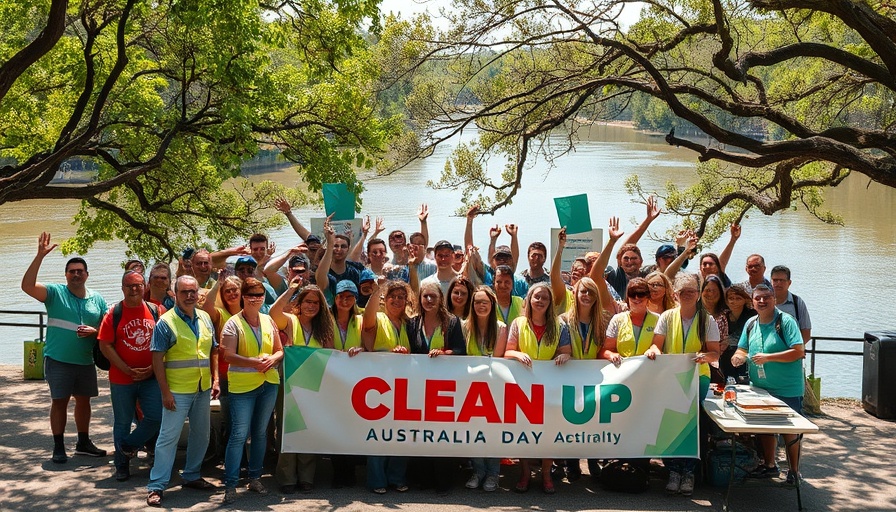
A Remarkable Volunteer Effort on Clean Up Australia Day
On its 35th anniversary, Clean Up Australia Day witnessed an extraordinary turnout, with over 800,000 volunteers participating in more than 8,000 cleanup events across the nation. This marks one of the highest participation rates in the event's history, demonstrating a profound commitment to environmental stewardship among Australians. The collective effort not only exemplifies a desire to maintain clean surroundings but also underscores the community's responsiveness to environmental challenges.
A Legacy of Environmental Action
Founded by the late Ian Kiernan, AO, Clean Up Australia Day started as a localized initiative in Sydney Harbour in 1989. What began with about 40,000 participants has grown into a nationwide movement engaging over 22 million Australians since its inception. Reflecting on the initiative, Pip Kiernan, Ian’s daughter and current Chair of Clean Up Australia, expressed pride in seeing this grassroots effort evolve into a vital component of national environmental advocacy. "My dad would be overjoyed to see the continued engagement from communities in cleaning up our beautiful land," she stated.
The Environmental Impact of Litter
Every year, approximately 130,000 tonnes of plastic waste escape into Australian waterways, creating a significant risk to marine life and ecosystems. Volunteers reported the most commonly collected items included soft plastics, cigarette butts, and increasingly, e-waste items like vapes. This trend reflects changing consumer habits and highlights the urgency of tackling waste management issues at a national level.
Education and Community Involvement
One of the unique aspects of Clean Up Australia Day is its role as a learning platform. Participants are encouraged to report the types of waste they collect, fostering awareness around litter prevention. This educational component transforms a simple cleanup into a powerful advocacy tool, equipping communities with knowledge to influence better practices in waste disposal.
Future Predictions and Participation Growth
The growing numbers signify a broader movement toward environmental consciousness. In 2024 alone, over 4,000 schools engaged in cleanup activities, indicating that the next generation is increasingly involved in sustainable practices. Clean Up Australia has announced its intention to expand programs beyond annual cleanups, focusing on year-round educational initiatives, thereby cultivating a habit of litter prevention among participants.
Making a Difference Year-Round
While Clean Up Australia Day draws significant attention, the organization promotes ongoing engagement with community efforts throughout the year. Interested individuals and groups can participate in local cleanup drives and educational workshops, maintaining a steady commitment to environmental health. Such involvement offers a pragmatic approach to combatting litter and fosters community pride as people actively participate in preserving their local environment.
The Importance of Practical Action
Clean Up Australia Day serves as a reminder that practical action can yield significant environmental benefits. As evidenced by the diverse range of items collected, every small effort contributes to a greater collective impact. Volunteers are not only cleaning up but are becoming champions of environmental change. Celebrating 35 years of this initiative, change is evidently possible through community cooperation.
Looking ahead, it is vital for community members to realize that every action, no matter how small, contributes to a cleaner, healthier Australian environment. To truly maximize the impact of these initiatives, consider registering for a cleanup event through Clean Up Australia, becoming part of this ongoing journey to sustainability.
 Add Row
Add Row  Add
Add 






Write A Comment